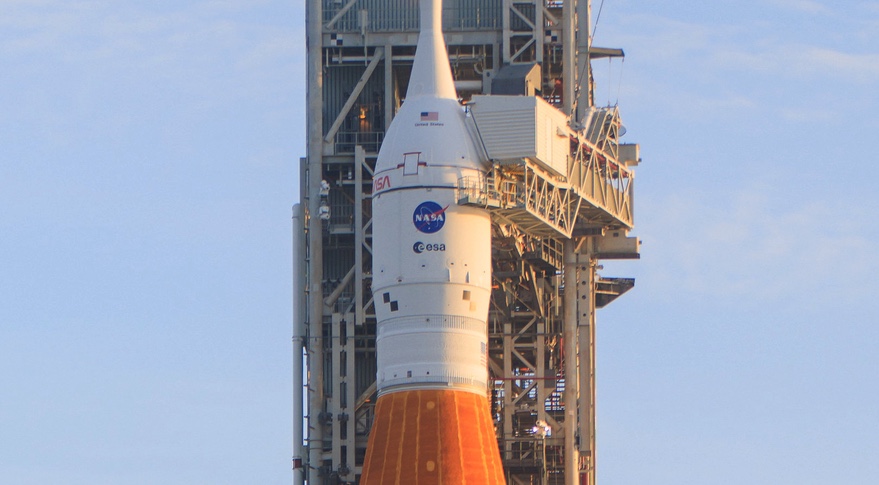Products You May Like
WASHINGTON — European officials are as excited as their American counterparts about the upcoming Artemis 1 launch that will bring them one step closer to flying European astronauts to the moon.
The European Space Agency’s major contribution to the mission, scheduled to launch as soon as Aug. 29, is the service module for the Orion spacecraft, called the ESM. That module, based on the Automated Transfer Vehicle cargo spacecraft ESA developed for space station resupply, provides power, propulsion, life support and other services for Orion.
“With this Artemis mission, Europe is going to the moon. That is quite historic,” Josef Aschbacher, director general of ESA, said at an Aug. 23 media briefing.
“The fact that NASA entrusts ESA to be on the critical path is huge,” he noted. “The partnership with NASA has been strong for decades, but with Artemis it will really reach a new level.”
Development of the ESM, including production of the module flying on Artemis 1, cost ESA about 650 million euros ($650 million), said David Parker, ESA’s director for human and robotic exploration. The overall cost of the program, which currently includes six service modules, is about 2.1 billion euros, reflecting lower per-unit costs as the module moves into regular production.
“We are entering into a serial production mode,” said Jean-Marc Nasr, executive vice president of space systems at Airbus, the prime contractor for the ESM, with the ability to work on three modules simultaneously. “We will deliver one ESM per year and we are extremely proud of being able to do that with all our partners in Europe.”
In exchange for the service modules, ESA will receive three seats on future Artemis missions. “We have not made, together with NASA, the final decision which missions those ESA astronauts will fly on,” Parker said. Two of those seats, he said, would likely be on Artemis 4 and 5, missions that will deliver ESA-developed components for the lunar Gateway.
Aschbacher said he hoped the third seat would allow a European astronaut to walk on the moon. “What I’m asking NASA very clearly is that Europe wishes to have a European astronaut footprint on the moon before the end of this decade.”
Those discussions, he said, will depend on both the outcome of Artemis 1 as well as the next ESA ministerial council meeting in November, where member states will fund ESA programs for the next three years. Aschbacher said ESA will request about 1.1 billion euros to continue work on ESM production and Gateway elements, part of an overall exploration package worth about three billion euros.
ESA is hoping a successful Artemis 1 mission can build support for broader exploration plans. One initiative the agency is seeking funding for is a large cargo lander that can support later Artemis missions. “We hope on our side that these so-called ‘Argonaut’ landers could be ESA’s next contribution to European exploration history, but the ministers will decide in November,” Parker said.
The ESA astronauts that will fly on upcoming Artemis missions will likely be selected from the existing group of seven active astronauts, Aschbacher said. “The selection will need to be made sooner rather than later because, at some point, the training needs to start,” he said, but added there was no date set yet for any announcement.
ESA is also in the final stages of selecting a new astronaut class. “I will select the next class of astronauts pretty soon,” he said. “This will be happening in the coming weeks.”
